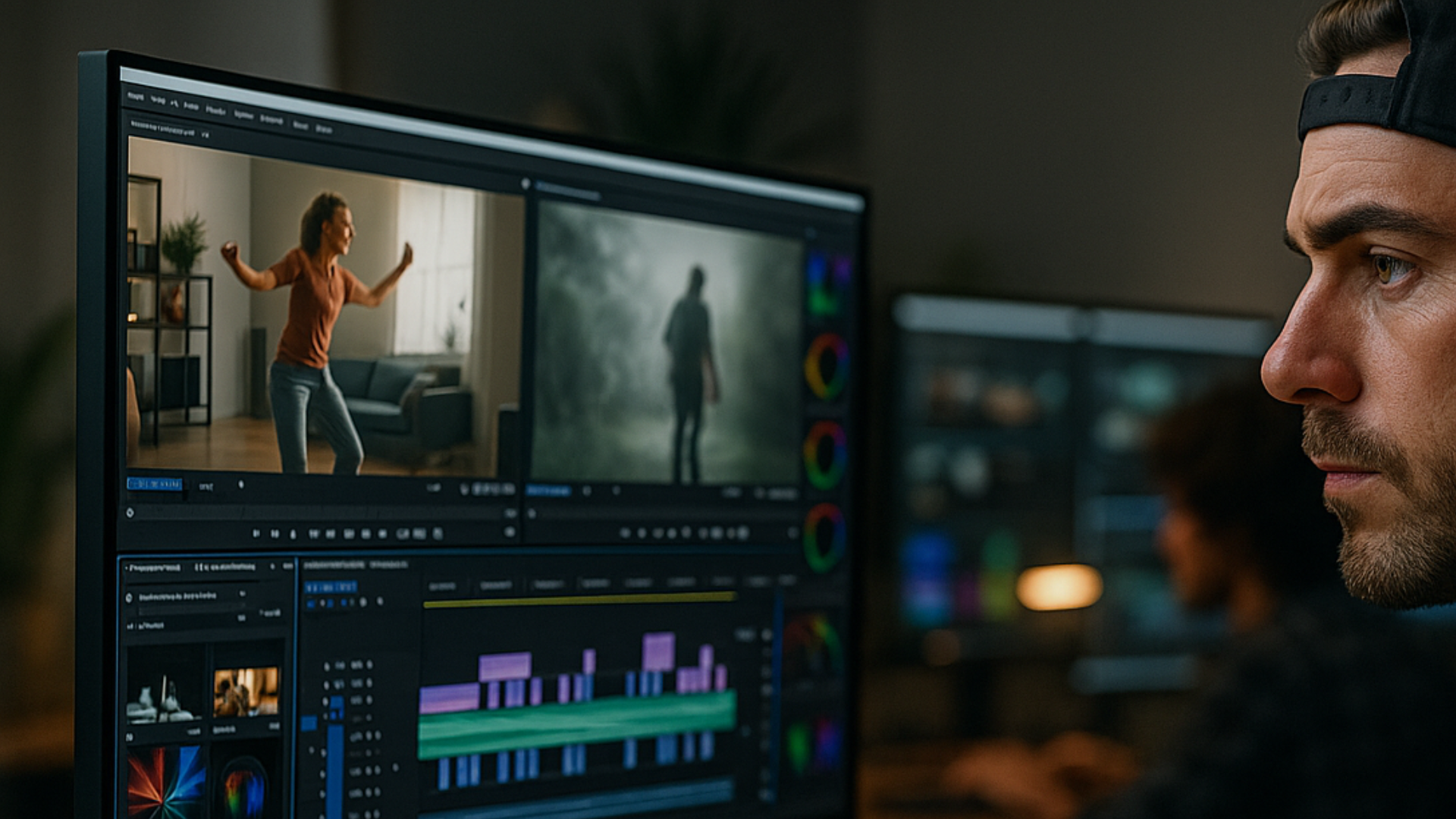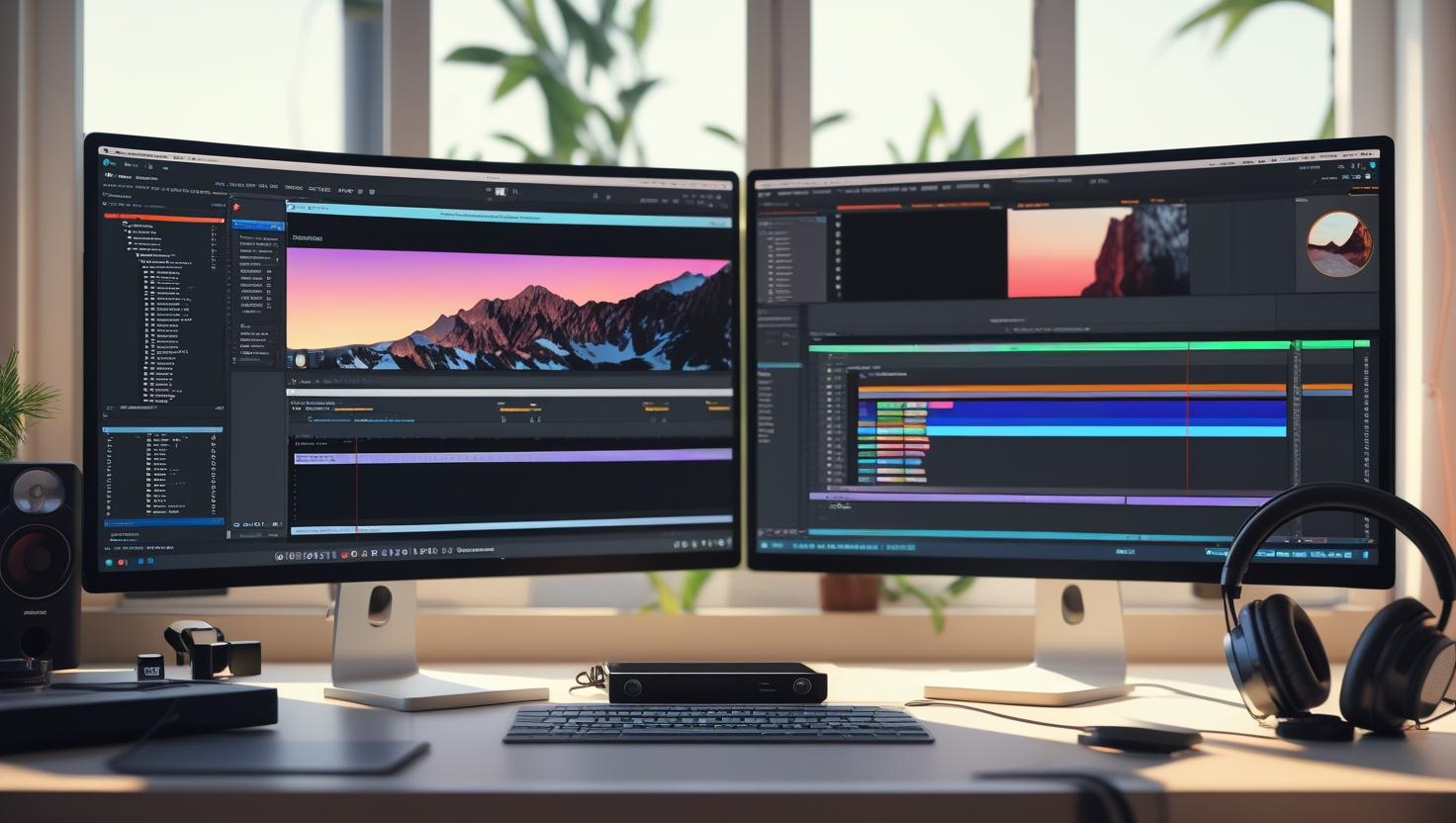5 Tricks Every Pro Editor Uses (And You Can Start Today)
If you feel like your editing process is slow, messy, or stuck in a loop, this one’s for you.
What separates pro editors from beginners isn’t just software or gear — it’s how they build and manage their workflow.
Pro editors follow a process that gives them speed, clarity, and visual consistency. The best part?
You can apply these tricks today, no matter what software or setup you’re using.
Here are 5 real-world editing tricks professionals rely on every day — with step-by-step breakdowns so you can use them right away.
1. Use Overlays as the Visual Backbone of Your Edit
What it is:
Overlays are visual elements you layer on top of your footage — like film burns, textures, light leaks, glitches, particles, etc.
Why it works:
They add rhythm, style, and identity to your edit. Instead of relying on plugins or filters, overlays give you full visual control, fast and lightweight.
How to apply (step-by-step):
-
Import your overlay into your editor (Premiere, Final Cut, CapCut, DaVinci, etc.)
-
Place the overlay on a layer above your main footage
-
Set the blend mode to Screen, Overlay, or Add (depending on the effect and your software)
-
Adjust opacity, scale, or speed if needed
-
Sync with beats, cuts, or transitions for a polished finish
When to use:
-
To make dry cuts flow smoother
-
To mark transitions in pace or tone
-
For music videos, reels, visual content with mood
Pro tip: Build a categorized library of overlays: transitions, textures, lights, film, glitch. It’ll save you hours in the long run.
2. Edit in Blocks (Modular Editing)
What it is:
Break your project into smaller, independent blocks — intro, body, and outro — and treat each as its own mini-edit.
Why it works:
Helps you stay focused, test styles independently, and easily adjust later. Also great for adapting to multiple formats (YouTube, Shorts, vertical).
How to apply (step-by-step):
-
Create a main sequence
-
Divide your project:
-
Block 1: Intro (5–10 sec)
-
Block 2: Main content
-
Block 3: CTA or closing
-
-
Edit each block as its own section
-
Assemble them and adjust overall rhythm in the final stage
When to use:
-
Long-form content
-
Branded or corporate projects
-
When different scenes need different styles
3. Set Up a Master Project Template
What it is:
A reusable editing template with folders, sequences, adjustment layers, SFX, music, LUTs, and motion graphics preloaded.
Why it works:
It saves time, reduces technical errors, and keeps your projects consistent across different clients or content formats.
How to apply (step-by-step):
-
Create a new project
-
Set up folders: Footage, Audio, Graphics, SFX, Exports
-
Load your go-to LUTs, effects, fonts, and transitions
-
Save the project as “MASTER_TEMPLATE”
-
Duplicate it for every new project
When to use:
-
Always. Every serious editor uses a base project structure.
4. Use Timeline Markers to Plan Ahead
What it is:
Markers are small flags or labels on your timeline to plan your cut based on music, narration, or visual rhythm.
Why it works:
They give you a map of where things happen — beats, drops, dialogue, cuts — and make editing more intentional and less reactive.
How to apply (step-by-step):
-
Play your music or voice track
-
Hit the shortcut (usually “M”) every time there’s a key moment
-
Color-code your markers:
-
Red = cut
-
Blue = text
-
Green = transition or visual cue
-
-
Build your edit around these guideposts
When to use:
-
Music-based edits
-
Edits with strong voiceover
-
Any edit where rhythm and pacing matter
5. Build a Personal Asset Library
What it is:
Your own organized library of visuals, overlays, LUTs, sounds, and graphics that you trust and use regularly.
Why it works:
You stop wasting time looking for effects online or re-downloading the same files. Everything’s at your fingertips.
How to apply (step-by-step):
-
Create folders or cloud drives with categories:
-
Overlays, SFX, LUTs, Fonts, Graphics, Templates
-
-
Use clear file naming (e.g. “Overlay_Grain_01.mov”)
-
Tag or preview files with tools like Adobe Bridge or Eagle
-
Update your library regularly with tested, high-quality assets
When to use:
Always. This is one of the habits that separates amateurs from pros.
Bonus: A Shortcut That Ties It All Together
If you’re serious about applying the first and fifth tricks, you’ll want a ready-made pack of overlays that you can drag, drop, and create with.
Check out the Overlays Essential Bundle
-
Over 2000 drag-and-drop video overlays
-
Organized by Transitions, Visual FX, and Look Styles
-
Includes LUTs, SFX, tutorials, and access to members-only extras
-
Works on Premiere, Final Cut, DaVinci, CapCut (Desktop & Mobile)
-
Designed for fast, clean, creative editing
Use it as your go-to folder when editing and see how your workflow instantly speeds up — with better visuals and less stress.
#videoeditingworkflow #editingtricks #postproductiontips #overlaysforvideo #videotransitionpack #howtoeditfaster #capcutediting #premiereworkflow #contentcreationtips #motiongraphicsforvideo



